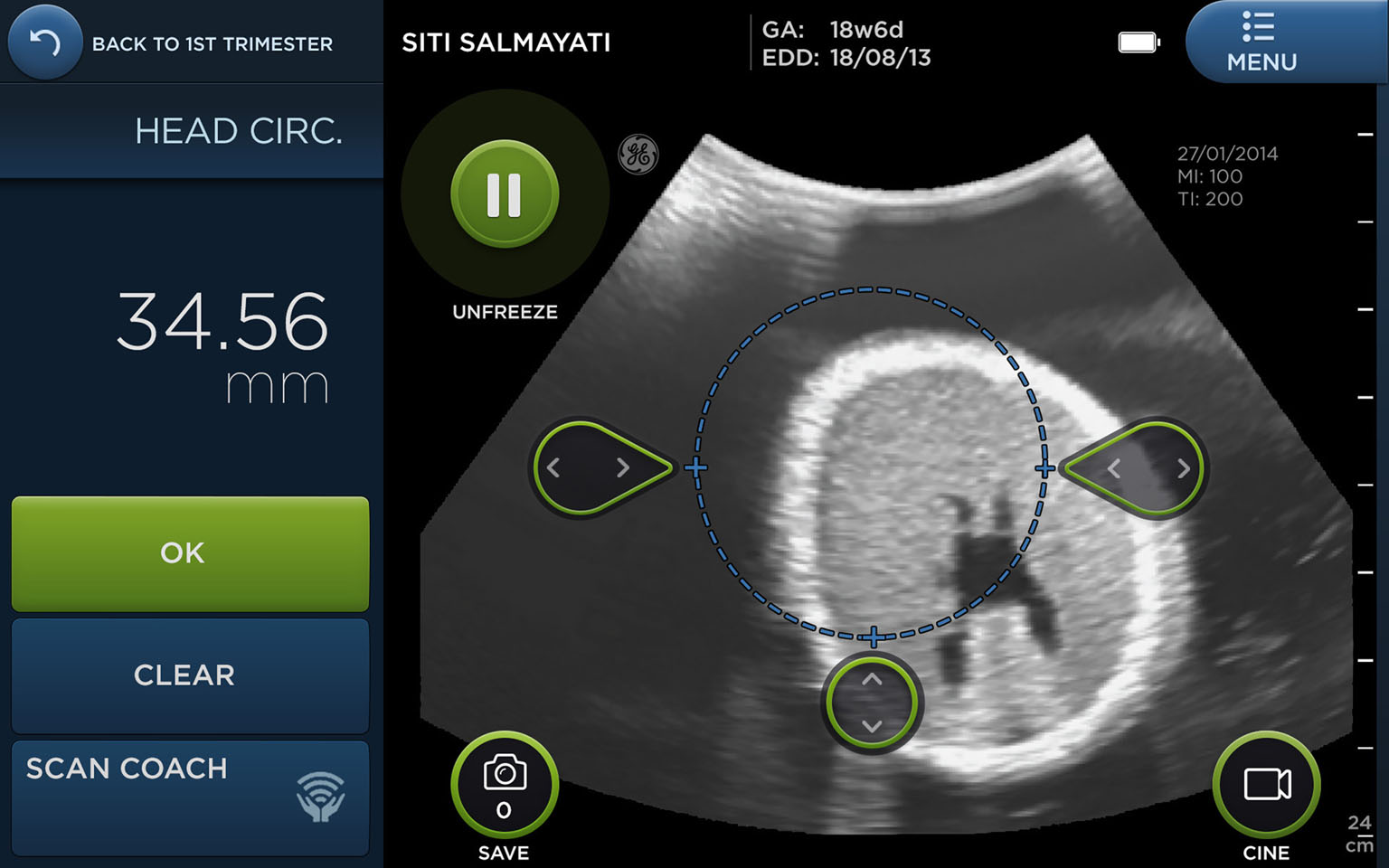High-tech care for needy mums-to-be wins top award
Device developed here brings ultrasound technology to poor, remote communities
Sign up now: Get ST's newsletters delivered to your inbox

The user interface of the Vscan Access employs design elements that make it look friendly, yet professional, and also easy to use. Field studies have shown that the detection rates of potentially life-threatening conditions in pregnant women improved two-fold when the device was used.
PHOTO: GE HEALTHCARE
Lin Yangchen
Follow topic:
A multinational healthcare company has used Singapore as a springboard to develop a portable device that makes advanced ultrasound technology accessible through a user-friendly, high-resolution touchscreen.
The device received a President's Design Award last Friday at the Istana. Doctors in remote areas around the world have been using it to detect potentially life-threatening conditions in pregnant women.
The Vscan Access, the size of a small handbag and weighing just under 2kg, was developed by GE Healthcare in Singapore in collaboration with local design agency Chemistry.
Dr Rajan Kalidindi, Asia-Pacific segment leader at GE Healthcare, said the device is part of a commitment GE made to the United Nations in 2010 to develop products to improve maternal healthcare in underdeveloped countries.
Dr Kalidindi added: "We chose Singapore because it's a gateway to Asean countries. For example, Indonesia is one of the potential countries where GE could help reduce maternal and infant mortality rates."
Ultrasound equipment, being expensive and bulky, is usually available only in hospitals.
Chemistry managing director Bassam Jabry, 42, who designed Vscan Access' user interface, said the team decided to make their device portable and affordable.
"The whole paradigm of what is ultrasound needed to be rethought, and this is really at the heart of what needs to happen in the world of medical devices."
Development of Vscan Access began in 2011 and took more than three years, including field research in about 20 countries across the Asia-Pacific and Africa.
In one study, the team visited clinics on the outskirts of Jakarta, using mock-ups of the device with stickers showing imaginary screens to understand the needs of local doctors and midwives.
The colour scheme and fonts were chosen to make it look friendly, yet professional, said Mr Jabry, and there are clear buttons that users know they can press and on-screen "calipers" they can drag around with their fingers to measure distances in the ultrasound image.
But beyond looking nice, Mr Jabry explained that the software also guides the user through the correct sequence of steps from beginning to end, and shows sample images to help the user get the correct scan.
The ultrasound images are lower in resolution compared to hospital-grade machines, but Dr Kalidindi said they are adequate for the job. Field studies showed a more than two-fold improvement in detection rates of potentially life-threatening conditions with Vscan Access than without ultrasound examination.
Mr Jabry added that the team worked on a compromise between image quality, user friendliness and affordability. GE declined to reveal the cost of the device, which targets both public and private healthcare providers in emerging economies.
Since Vscan Access became available last year, more than 200 units have been deployed in Nigeria, Ethiopia, Egypt, Australia, the United Kingdom and several Asian countries.
The President's Design Award, run by the DesignSingapore Council and the Urban Redevelopment Authority, is Singapore's highest honour for design in any discipline. This year, nine other projects, ranging from architecture to consumer electronics, were awarded Design of the Year.
The jury's citation for Vscan Access noted: "This project is a masterclass in human-centred research, user interface design and system integration, bringing critical healthcare to those who need it most."

